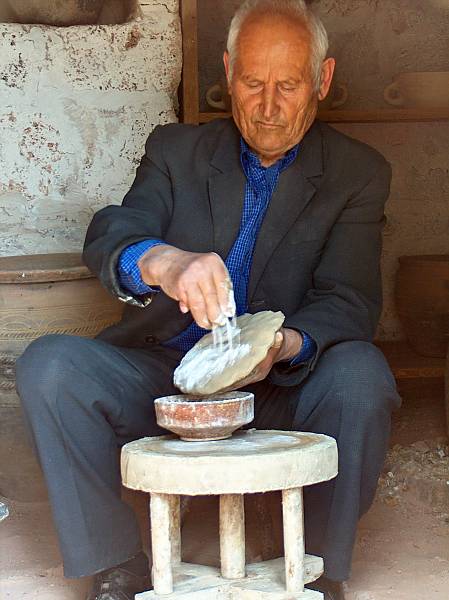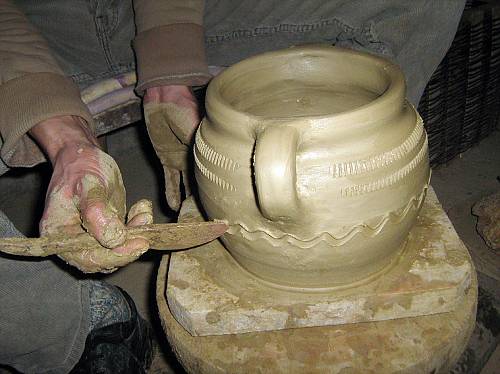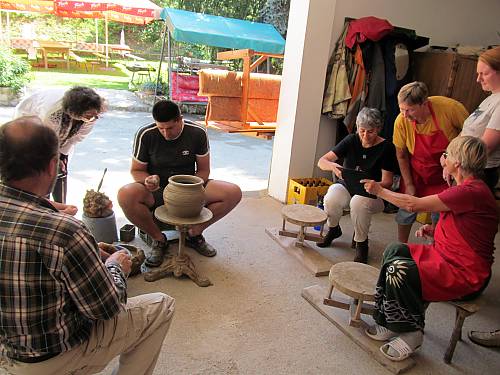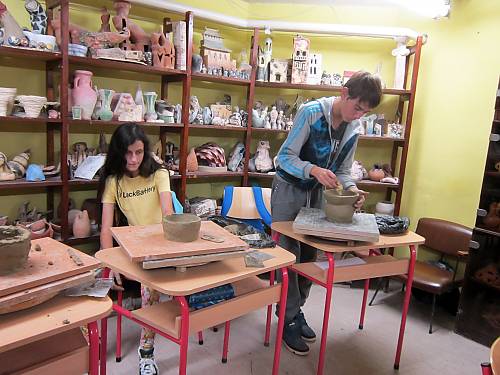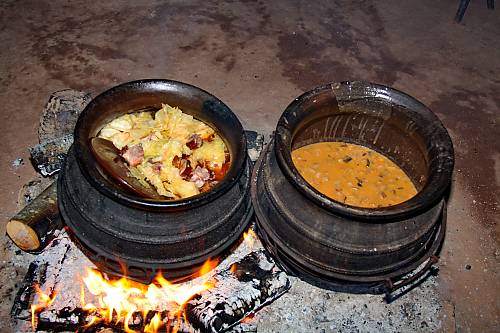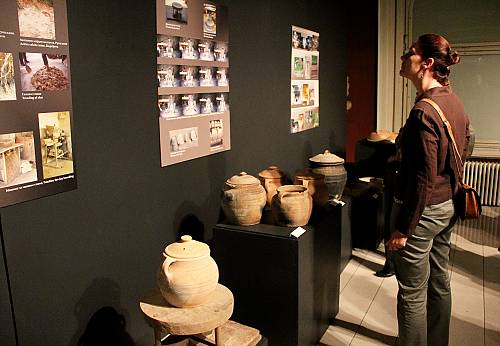Zlakusa pottery making, hand-wheel pottery making in the village of Zlakusa
Inscribed in 2020 (15.COM) on the Representative List of the Intangible Cultural Heritage of Humanity

Zlakusa pottery making, hand-wheel pottery making in the village of Zlakusa relates to the knowledge and skills involved in making unglazed vessels for thermic food processing. Used in households and restaurants across Serbia, Zlakusa pottery is made of clay and calcite and the wheel is run exclusively by hand. The process takes seven to ten days, and includes the preparation of clay paste, shaping, decoration, finishing, drying and baking. The finished vessels are decorated with geometrical ornaments made with wooden or metal tools, and handles are added to some vessels. Nowadays, traditional shapes, pots, bread-making and meat-frying pans and small pans for the kitchen oven have been adjusted to the modern way of preparing and serving food. The related knowledge and skills are mainly transmitted through direct participation and work alongside experienced craftspeople within the community. Demonstrations at the Zlakusa Festival and classes held at the Arts School in Užice provide another key mode of transmission. Zlakusa pottery is often presented at fairs and festivals throughout Serbia and the vessels are widely used during important family and community events. It is claimed that some dishes prepared in Zlakusa earthenware on an open fire have a unique taste. Moreover, the pottery is closely associated with the village of Zlakusa and its environs due to its close link with the natural environment, which provides the raw material.
